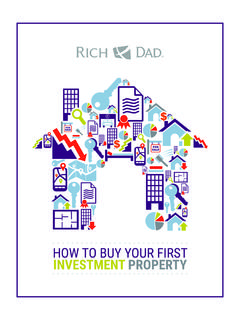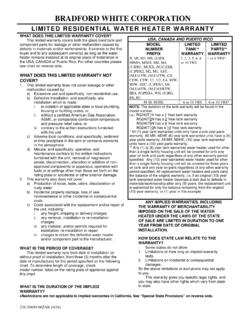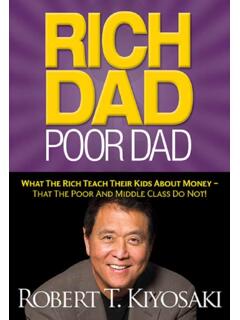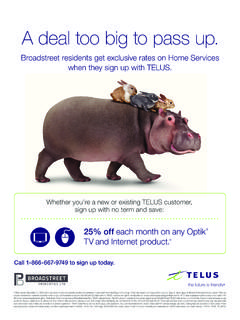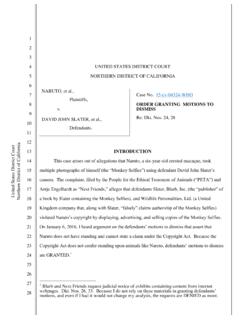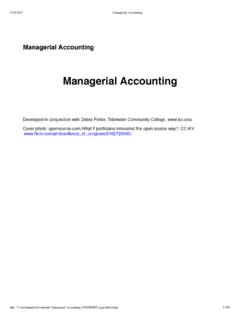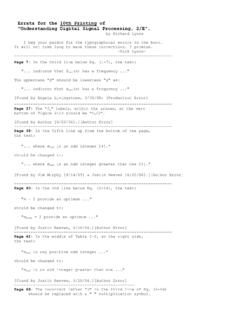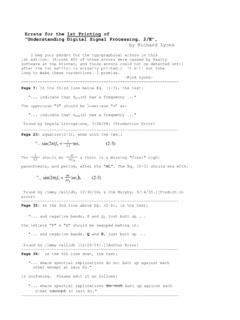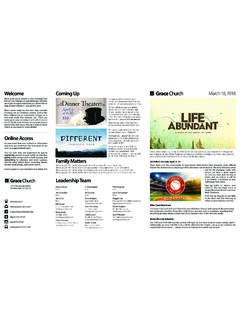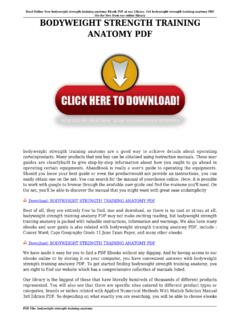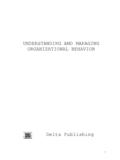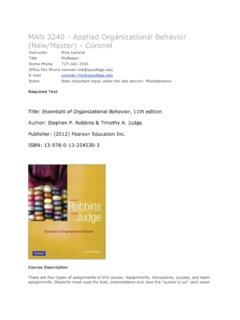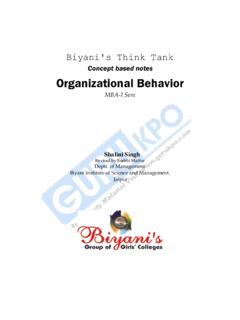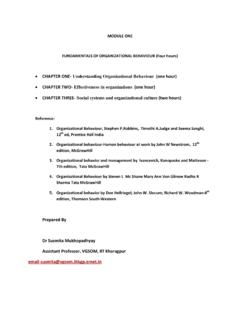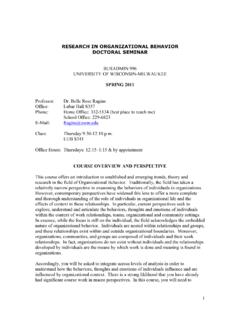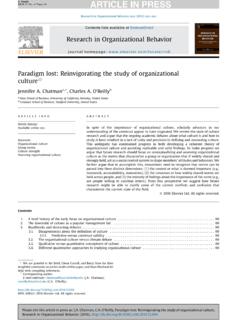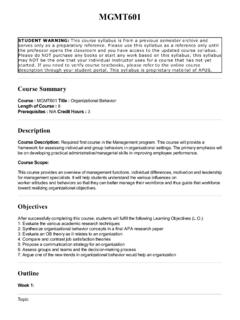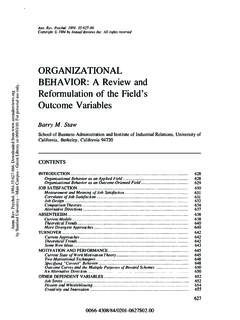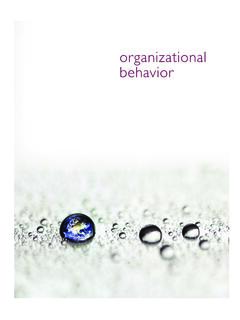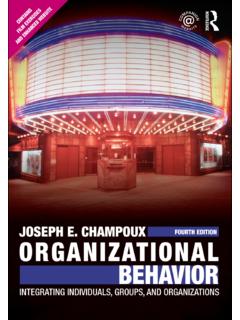Transcription of Organizational Behavior - Amazon S3
1 StraighterLine BUS120: Organizational Behavior Organizational Behavior Course Text McShane, Steven L. and Mary Ann Von Glinow. Organizational Behavior , 4th edition, McGraw-Hill/Irwin, 2008, ISBN: 9780073049779. [This text is available as an etextbook at purchase or students may find used, new, or rental copies at this link ] Course Description This course is designed to provide students with an opportunity to explore the Behavior of individuals, groups, and organizations within today s dynamic work environment. Specific topics include communications, motivations, leadership, power structure, and Organizational culture. Course Objectives After completing this course, you will be able to: Correlate self-concept, personality, emotions, and values to work performance.
2 Correlate intelligence, ability, attitudes, job satisfaction, and learning to work performance. Illustrate strategies to overcome social perception and attribution, diversity, and stress to improve performance. Compare and contrast content and process theories of motivation. Explain the use of goal-setting, feedback, rewards, and reinforcement, in improving performance. Examine the structure, size, and design of teams, and the effect of norms and roles on Behavior . Examine techniques for effective team work, especially in problem-solving and decision-making. Examine barriers to communication and apply techniques of effective communication. Differentiate functional and dysfunctional conflict and apply conflict management techniques.
3 Apply influence, power, and political tactics to achieve performance-related goals, consistent with ethical principles. Select elements of Organizational structure to optimize employee motivation. Correlate Organizational culture to employee motivation. Examine employee responses to Organizational change and apply strategies to overcome resistance to change. Apply leadership theories and styles to improve employee motivation. Course Prerequisites There are no prerequisites to take Organizational Behavior . Privacy Policy | Student Handbook StraighterLine BUS120: Organizational Behavior Important Terms In this course, different terms are used to designate tasks: Proctoring: all final exams require proctoring which can be completed conveniently from your home.
4 A webcam is required. Tutoring: memberships include online tutoring for students to access with any content/subject related questions in the place of faculty. If your tutor is not able to answer your questions please contact a student advisor. Review Activities: A non-graded assignment to assist you in practicing the skills discussed in a topic. Homework: non-graded quizzes that help highlight the content which will be assessed on graded exams. Graded Exam: A graded online assessment. Course Evaluation Criteria StraighterLine provides a percentage score and letter grade for each course. See Academic Questions section in FAQ for further details on percentage scores and grading scale. A passing percentage is 70% or higher.
5 If you have chosen a Partner College to award credit for this course, your final grade will be based upon that college's grading scale. Only passing scores will be considered by Partner Colleges for an award of credit. There are a total of 1000 points in the course: Topic Assessment Points Available 3 Graded Exam 1 125 6 Graded Exam 2 125 6 Midterm Exam 250 10 Graded Exam 3 125 14 Graded Exam 4 125 15 Final Exam 250 Total 1000 Course Topics and Objectives Topic Topic Subtopics Objectives 1 Issues in Individual Behavior Social Perception and Attributions Diversity Stress and Stress Correlate perceptions, stereotypes, and attribution to workplace Behavior . Analyze issues impacting a diverse Privacy Policy | Student Handbook StraighterLine BUS120: Organizational Behavior Management workforce.
6 Examine causes and consequences of stress. Describe stress-reduction techniques. 2 Determinants of Individual Behavior Self-Concept Personality Emotions Values Define and explain self-concept and self-efficacy. Evaluate the applicability of personality traits to work performance. Correlate emotions to work performance. Classify and illustrate personal values and value conflicts. 3 Determinants of Individual Task Performance Intelligence and Ability Attitudes Job Satisfaction Learning Explain mental abilities and multiple intelligences. Correlate attitudes to work performance. Compare and contrast models of job satisfaction. Examine how organizations encourage employees to learn. 4 Theories of Motivation Content Theories of Motivation Process Theories of Motivation Compare and contrast content theories of motivation.
7 Compare and contrast process theories of motivation. 5 Motivation: Performance Management Goal Setting Feedback and Rewards Reinforcement Explain the effect of outcome goals and learning goals on performance. Examine the effect of feedback and rewards on performance. Assess the use of reinforcement for Behavior modification. 6 Teams in the Workplace Types of Teams Norms and Roles Team Structures Problems of Teams List types of teams. Explain the effect of norms and roles on Behavior . Describe the structure, size, and design of teams. Examine the obstacles to team effectiveness, such as groupthink and social loafing. Privacy Policy | Student Handbook StraighterLine BUS120: Organizational Behavior 7 Team Building Effective Teams Stages of Team Development Decision Making in Teams Describe the characteristics of effective teams, such as cohesiveness, cooperation, and trust.
8 Explain and illustrate the stages of team development. Compare and contrast team problem-solving and decision-making techniques. 8 Communication Process of Communication Barriers to Communication Types of Communication Effective Communication Explain the process of communication. Illustrate barriers to communication. Illustrate verbal, non-verbal, formal, and non-formal communication. Apply the techniques of sending and receiving messages and active listening. 9 Organizational Politics Influence Tactics Types of Power Politics Ethics Select an influence tactic for a situation. Classify bases of power in business situations. Demonstrate the use of political tactics to achieve Organizational goals. Apply principles of ethics when exerting influence or authority or when employing political tactics.
9 10 Conflict and Negotiation Causes of Conflict Functional and Dysfunctional Conflict Conflict Management Negotiation Analyze the causes of conflict. Distinguish between functional and dysfunctional conflict. Apply techniques of stimulating functional conflict. Apply techniques of resolving dysfunctional conflict. Apply techniques of negotiation to resolve conflicts. 11 Leadership Leadership Theories and Styles Leaders and Followers Compare and contrast leadership theories and styles. Correlate leadership theories and styles to employee motivation. Privacy Policy | Student Handbook StraighterLine BUS120: Organizational Behavior 12 Organizational Structure and Design Structure and Organizational Behavior Describe how structure enhances Organizational effectiveness.
10 Explain how flexibility contributes to Organizational success. 13 Organizational Culture Elements of Organizational Culture Organizational Socialization Mentoring Correlate Organizational artifacts, values, and assumptions to employee motivation. Correlate models of Organizational socialization to employee motivation. Evaluate the usefulness of mentoring as a tool to embed Organizational culture. 14 Change Management Models of Change Resistance to Change Overcoming Resistance to Change Analyze models of Organizational change. Examine the causes of resistance to change. Apply strategies to overcome resistance to change. 15 Review Topic Review Review Privacy Policy | Student Handbook
